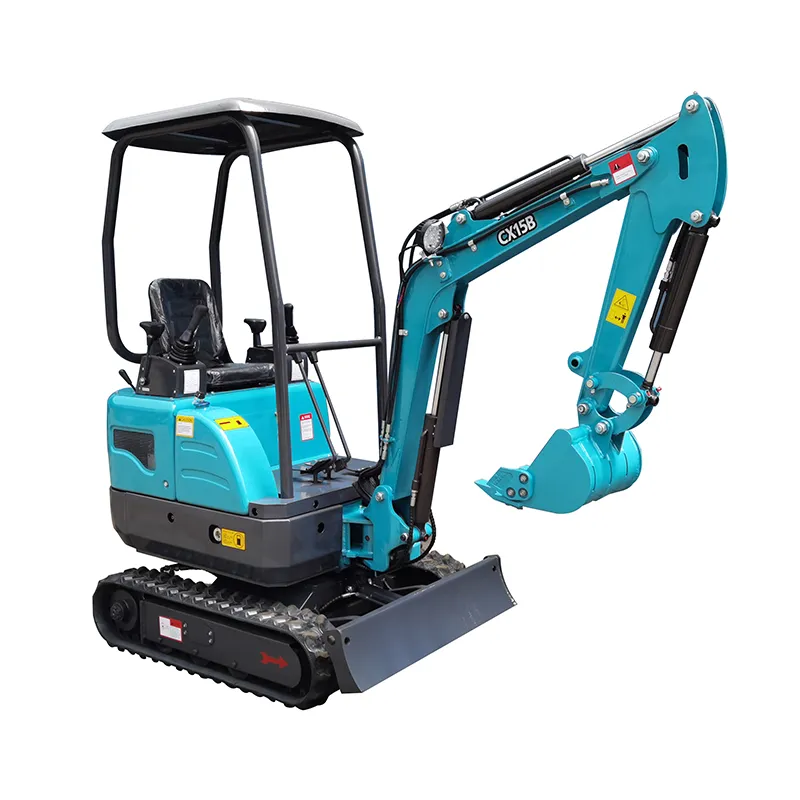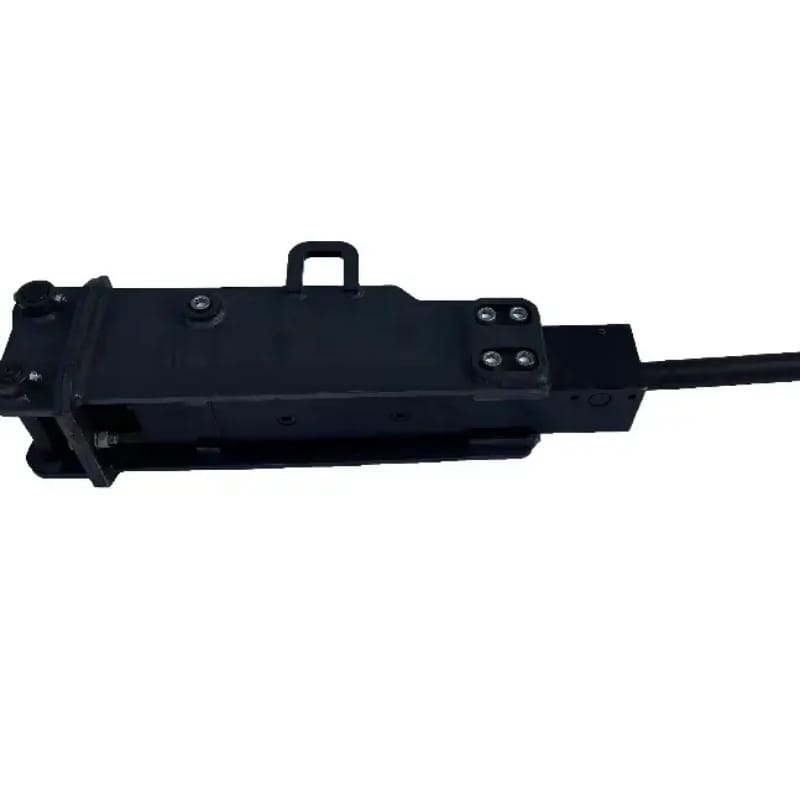Introduction
The global construction equipment industry is undergoing a significant transformation, driven by emerging environmental regulations, rising fuel costs, and growing demand for sustainable solutions. In recent years, the rise of Electric Mini Excavators has captured attention as a viable alternative to traditional Diesel Engines. Leading manufacturers and rental fleets are increasingly adopting electric excavators in urban, indoor, and low-emission zones, while diesel-powered mini excavators continue to dominate remote and heavy-duty work markets. This shift reflects broader industry trends toward electrification, decarbonization, and innovation, with both equipment types offering distinct advantages and challenges. Against this backdrop, evaluating the total cost of ownership alongside environmental impacts is crucial for informed decision-making.
Comparative Acquisition Cost
When evaluating procurement expenses, Electric Mini Excavators typically carry a higher upfront investment compared to their diesel-powered counterparts. Many factors contribute to this cost gap, including the price of lithium-ion battery packs, power electronics, and electric motor systems. In contrast, Diesel Engines benefit from mature manufacturing processes and well-established supply chains, resulting in lower initial purchase prices. However, subsidies, tax incentives, and early-adopter discounts in many regions are beginning to narrow this differential. An electric mini excavator that may cost 20–40 percent more than a diesel unit today could effectively cost the same—or even less—when adjusted for government incentives and total lifecycle value.
Daily Operating Costs
Operating costs represent a key factor in the long-term viability of construction equipment. Electric Mini Excavators offer substantial savings on energy costs: electricity generally costs less per hour of operation than diesel fuel, especially when sourced from off‑peak grid rates or renewable systems. Typical energy cost per hour for electric models ranges from $1.50–$3.00, whereas diesel-powered mini excavators can incur fuel costs of $5.00–$8.00 per hour, depending on market prices. Beyond fuel, electric machines feature reduced noise and negligible exhaust emissions, enabling use in noise-sensitive or indoors settings without the need for costly ventilation or permit fees. In addition, regenerative braking and electric drive systems further enhance efficiency, allowing for longer run-times per charge.
On the diesel side, daily expenses must account for fuel volatility, filtration systems, and storage infrastructure. While diesel remains readily available across most job sites, fluctuating global petroleum prices can dramatically affect monthly operating budgets. Moreover, remote locations may lack efficient fuel supply logistics, increasing costs further. Modern diesel mini excavators, equipped with Tier 4 compliant engines, mitigate emissions but may require AdBlue/DEF fluids and periodic emissions system resets, each adding additional cost per hour.
Maintenance Costs and Long‑Term Durability
Maintenance is where Electric Mini Excavators often demonstrate significant advantages. Electric drivetrains contain fewer moving parts—absent are fuel pumps, injection systems, turbochargers, exhaust aftertreatment components, engine oil filters, and transmission clutches. Routine maintenance primarily involves inspection of battery health, hydraulic fluids, greasing pivot points, and software diagnostics. This streamlined upkeep typically translates to lower annual maintenance costs: estimates suggest electric units cost 30–50 percent less to maintain than diesel equivalents. Battery longevity is a critical variable; modern lithium-ion packs often come with 5–8 year or 2,000–5,000‑hour warranties, with expected degradation rates of 20–30 percent over that period. Replacing a battery in year 8 can be a significant expense—yet total lifecycle analysis shows cost parity due to saved fuel and maintenance.
Diesel mini excavators, by contrast, require more frequent servicing: oil changes, filter replacements, injector calibration, emissions tests, and DEF systems all contribute to ongoing expenses. Heavy usage in harsh environments accelerates wear on engine components and undercarriage parts, demanding additional attention. However, diesel engines have a proven durability track record and modular component design, making field repairs and part replacements relatively straightforward. The resale market for well‑maintained diesel units also remains robust, offering residual value support that partially offsets long-term costs.
Environmental Impact and Policy Support
Electric Mini Excavators generate zero tailpipe emissions during operation, eliminating CO₂, NOₓ, particulate matter, and other pollutants. This clean operation supports improved air quality in construction zones, fewer noise disturbances, and strong suitability for urban redevelopment, tunnel work, and interior demolitions. When powered by decarbonized electricity, lifecycle greenhouse gas emissions drop significantly. Many national governments, regional authorities, and municipalities are rolling out targeted incentives—grants, tax credits, congestion charge waivers, and zero-emission zone access—to accelerate adoption. For example, Europe’s updated Stage V and the U.S. federal incentives provide rebates of up to $20,000 per machine.
Diesel Engines, while still efficient in energy density and remote-service flexibility, emit greenhouse gases and pollutants. Tier 4 Final and EU Stage V regulations have cut particulate and NOₓ by upwards of 90 percent compared to older engines, but CO₂ emissions remain high. Compliance may require complex exhaust aftertreatment systems, which are subject to stricter emission testing and idle-restriction rules. Operators in cities with low‑emission zones often incur fines or face restricted access unless equipped with compliant diesel machines, further increasing operational complexity. Unlike elective fuel mandates, diesel engines receive limited clean-energy subsidies or tax relief.
Tailored Recommendations Based on Application and Environment
Short‑Term Projects with Long‑Term Planning
For fleet operators executing urban demolition or indoor renovation over several months, Electric Mini Excavators make clear economic sense. Reduced noise, lower energy costs, minimal maintenance, and access to incentive programs ensure a faster return on investment. Charging infrastructure represents initial capital, but plug-and-play models and portable battery packs are reducing this barrier.
Remote Sites and Heavy‑Duty Requirements
On undeveloped land or extended-duration roadwork in remote areas, Diesel Engines remain advantageous. Their superior energy density and refueling flexibility eliminate downtime associated with charging, while established maintenance networks support long-term durability. For projects far from grid access or subsidies, diesel provides reliable performance with predictable operating costs.
Hybrid Approaches
Some operators opt for dual-power strategies: electric mini excavators for indoor or urban tasks and diesel machines for remote or heavy-duty assignments. This mixed fleet strategy balances environmental responsibility with operational flexibility. It also hedges against changes in regulation and fuel pricing.
Outlook and Conclusion
The trajectory of construction equipment clearly favors decarbonization and electrification. Electric Mini Excavators are migrating from niche to mainstream, boosted by technological advances in batteries, digital diagnostics, and powertrain efficiency. While acquisition costs remain higher, lifecycle savings in energy and maintenance—augmented by policy incentives—are steadily eroding the cost premium. Meanwhile, Diesel Engines continue to evolve with cleaner combustion technologies, but their long-term viability in urban environments and under low‑emission mandates is increasingly constrained.
Looking ahead toward 2030 and beyond, battery energy density improvements, faster charging systems, and renewable energy integration will tilt the balance further toward electric solutions. Meanwhile, diesel technology will continue refining emissions control and fuel efficiency, yet its role will likely shrink to specialized contexts. In conclusion, selecting between electric mini excavators and diesel engines hinges on project type, site location, regulatory environment, and total cost dynamics. Companies that align equipment choice with future-ready strategies—embracing electric technology where feasible and employing diesel judiciously—will gain competitive advantage in both cost efficiency and environmental stewardship.





